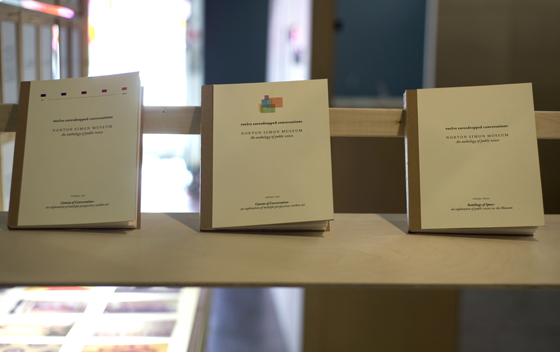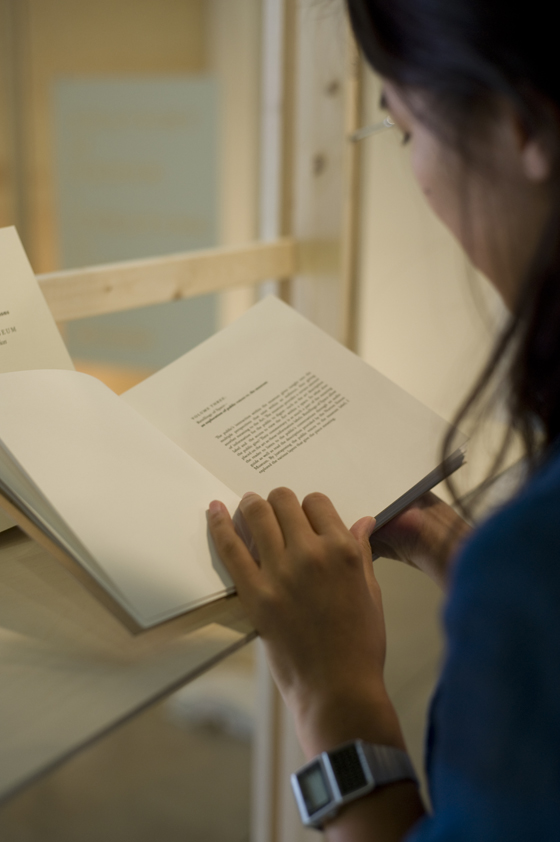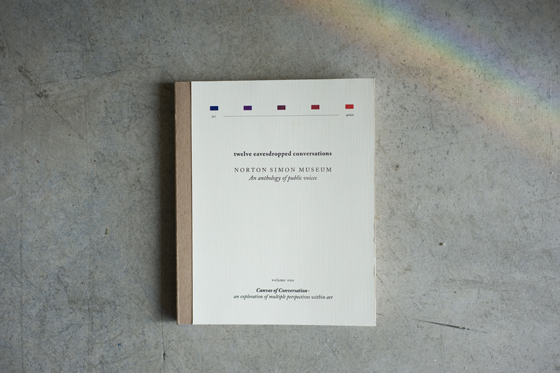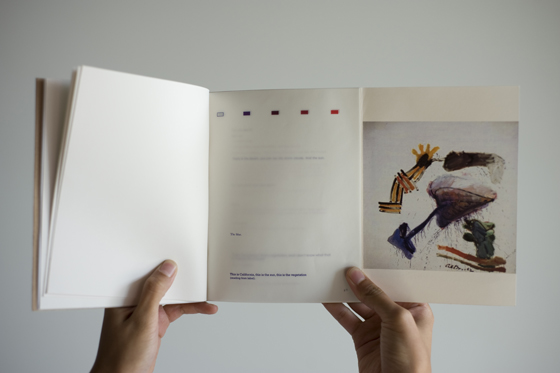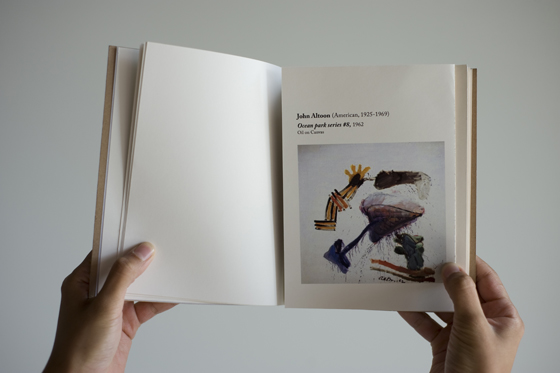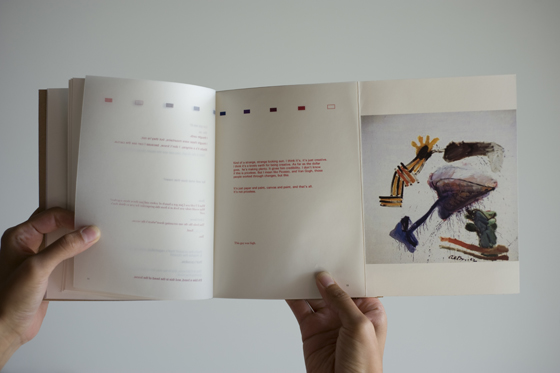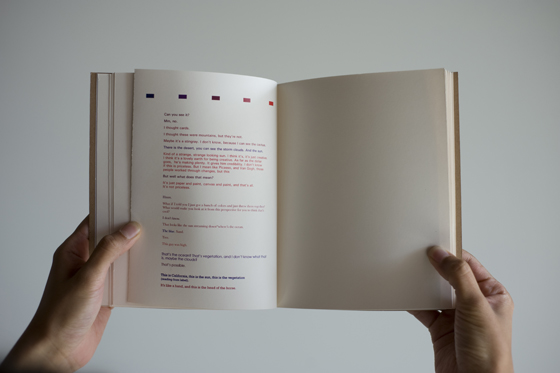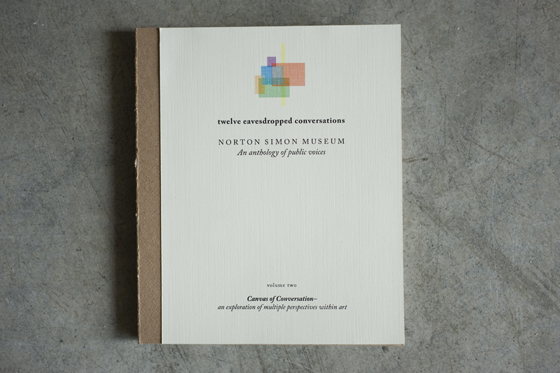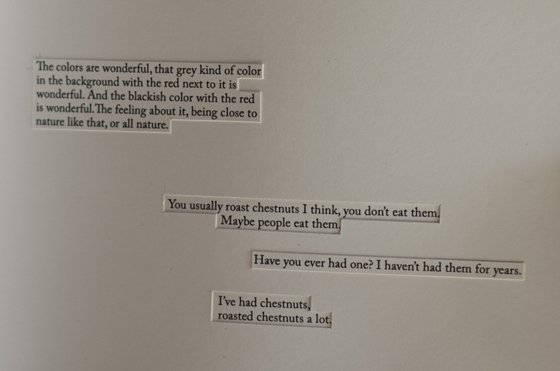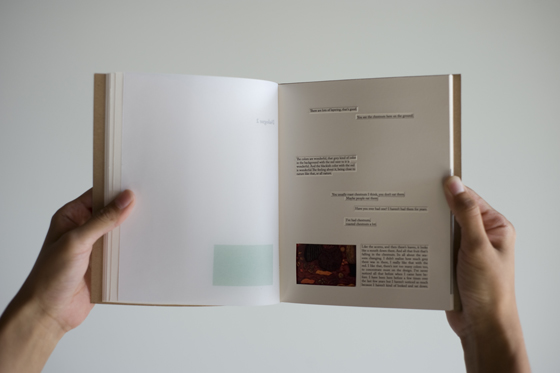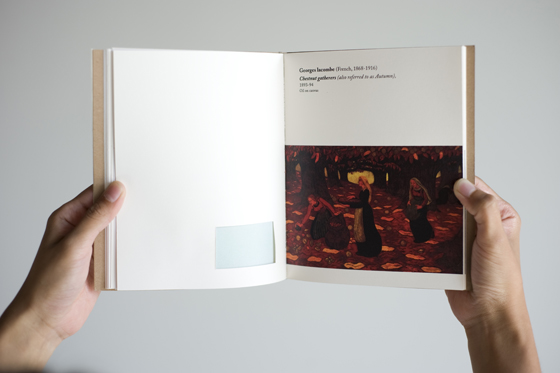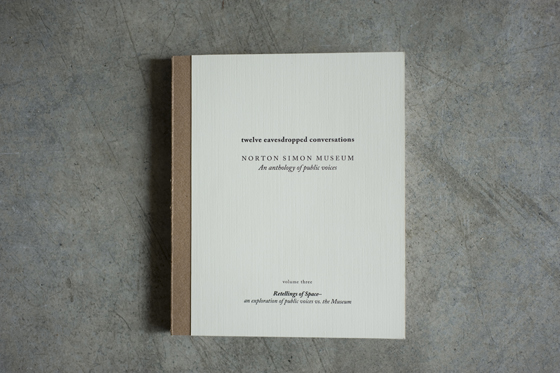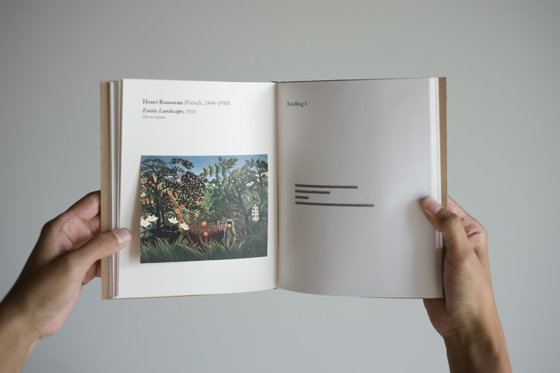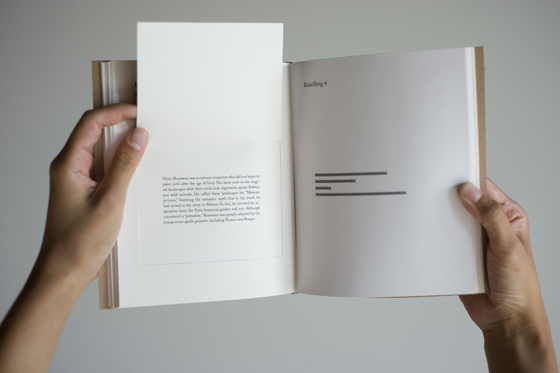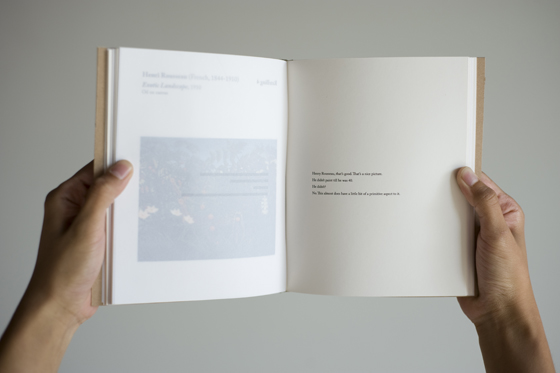12 eavesdropped conversations
What does the public give that the museum cannot?
Can eavesdropped conversations be telling of a public space?
"Did you know he was a pedophile?” -- A statement made about one of my favorite paintings, which changed my perspective on the piece.
We believe the museum to be an intellectual space holding valuable art. But who are the everyday people that are contributing to this institution and what are the conversations that surround the paintings?
Through four days of eavesdropping on conversations about art at the Norton Simon museum, I designed three books as a documentation of the public's interaction within a museum. There is what the museum provides, and what the public communicates, both valuable in what they represent. They coexist with one another to satisfy what the Museum represents.
"Twelve eavesdropped conversations"
The Norton Simon Museum: An Anthology of Public Voices.
"Yet when an image is presented as a work of art, the way people look at it is affected by a whole series of learnt assumptions about art" John Berger from "Ways of Seeing"
Every time I visit a museum it is a unique adventure--each time, a new community with which to share the experience of a being a “viewer” surrounds me.
A memorable incident at the Metropolitan Museum of Art inspired me to create this anthology. I visited the MET with an individual who owned a gallery. We were viewing paintings by the artist Paul Gauguin, who is one of my favorite painters. This individual asked me, “Did you know he was a pedophile?” Suddenly, the painting I had known for years was different. I realized how the power of unknown information could quickly change my perspective.
Due to this episode, I developed a curiosity for the various perspectives in which viewers experience a piece. At museums, individuals range from scholarly experts to those whose knowledge of artists and artwork is vague. The range of the audience opens the range in opinions, and it is my belief that one opinion is no more valuable than another that may exist on the further end of this spectrum of observers. In order to investigate this further, I conducted an experiment that involved eavesdropping at the Norton Simon Museum. This book reflects the public’s interaction within the museum, as well as gives insight into the multiple perspectives that exist within an audience.
Volume 1: Canvas of Conversation--an exploration of multiple perspectives within Art.
The layers of conversation presented in Canvas of Conversation allow the audience to become the voice behind the painting. Each time the readers turns a page, they are presented with additional conversations about the Art ranging from fact to fiction--hopefully allowing them to gain new perspectives about the work. The audience's voice is a crucial part of how the work in the museum is perceived. Through the multiple opinions expressed by the audience, the reader will gain unexpected meaning about a painting.
Inside the book, there is a folder that holds layers of translucent paper stacked on top of one another to reflect upon the eavesdropped conversations I collected from the museum. This stack is to be displayed as one canvas portraying the viewers' voices. The rectangles on top of the page represent the range of conversations from fact to opinion. These rectangles are situated left to right. The first rectangle on the left side is colored red and the far rectangle on the right is colored blue; everything in between represents the voices between fact and opinion. For example, a viewer's comment "There is a lot of green,” becomes a fact because they state the obvious of what is in front of them. This highlights the first rectangle, which is red. On the other hand, a subjective commentary on how the painting makes the viewer feel, or how they feel about the painting becomes an opinion, thus highlighting the last rectangle of the spectrum.
Volume 2: Depth of Dialogue-- an exploration of multiple dialogues within Art.
Depth of Dialogues explores the dialogue between two individuals when conversing about Art. One opinion does not carry weight more than the other because both parties contribute to the conversation in order to create this dialogue.
When eavesdropping, the listener only hears pieces of a conversation, which can make it difficult to understand the context of the dialogue.
In order to display this relationship between the individuals participating in the dialogue, two roles were assigned within a page. Person A's comments were lifted up and pasted on top of the page whereas Person B's comments were di-cut into the page. To reflect upon the experience of being a listener when eavesdropping, there is a portion of the page that is cut out to give the reader a clue into what the audience may be discussing--introducing the reader to the dialogue.
Volume 3: Retellings of Space– an exploration of public voices vs. the Museum
The public’s interaction within the museum gives insight into the multiple perspectives that exist within an audience, thus giving another meaning to the Art. The museum provides a certain amount of information for the public to digest--such as the art description label and the access to view the Art within a space. So what does the public give? Their commentary is as much a part of the meaning placed on the art as these information labels. Retellings of Space allow the reader to listen to the public's conversations by inserting a headphone into the manual. On the opposite page, there is a photograph of the painting. Underneath this image, is a description provided by the Norton Simon Museum. By juxtaposing the public voices to the Museum label, I explored the various layers that give the piece meaning.
